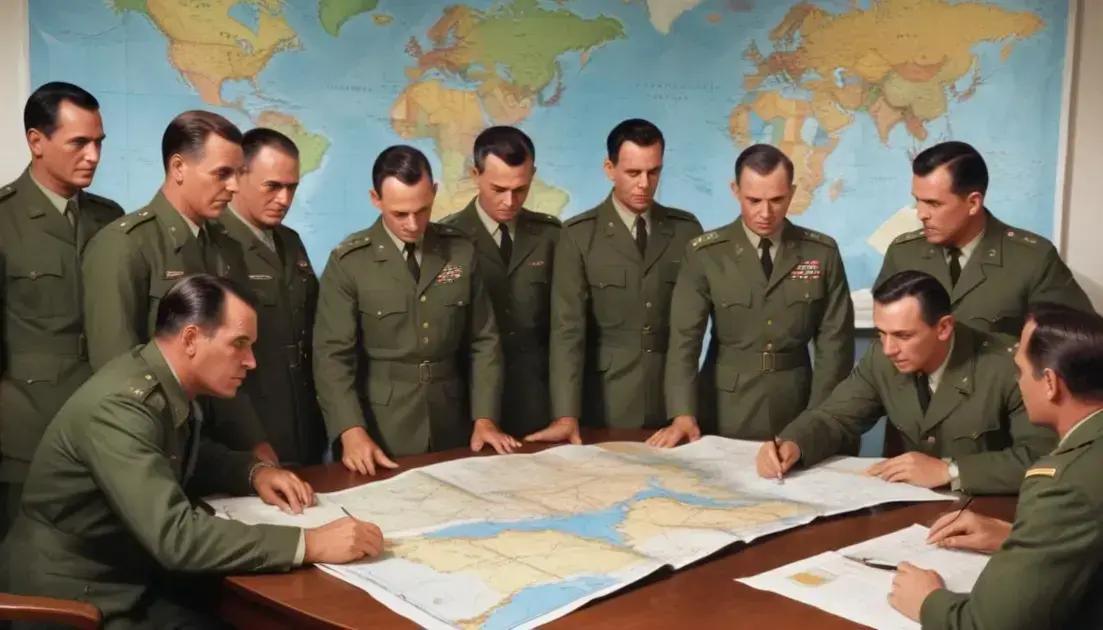
Political Propaganda: The Invisible War of Ideas
Political propaganda has evolved significantly, especially with digital platforms shaping how ideas spread. Modern tactics include targeted messaging, social media influence, and the rapid dissemination of information, which can invite misinformation. Recognizing these methods helps individuals critically evaluate the media they consume, making informed decisions about the information that impacts their beliefs and actions.
Political Propaganda is often considered the invisible element in conflicts, manifesting in persuasive narratives that shape public perception. Have you ever wondered how ideas can be as powerful as weapons? Buckle up as we explore this fascinating battlefield!
Understanding Political Propaganda
Understanding Political Propaganda can be tricky, but it’s a key part of how societies work. It’s more than just campaigning; it’s about shaping opinions and beliefs. Political propaganda uses various techniques to persuade people. These might include emotional appeals, catchy slogans, or repetition of ideas.
One main tactic is playing on our feelings. For example, when a leader speaks about hope or fear, it can change how we think and act. Simple messages often stick better in our minds. This is why slogans like ‘Yes We Can’ or ‘Make America Great Again’ are so effective.
Another important aspect is the source of the propaganda. Who is saying it matters just as much as what is being said. Often, we trust voices we already know. This leads to the echo chamber effect, where we only hear opinions that match our own.
The timing of propaganda is crucial, too. In times of crisis, propaganda can spread quickly. It grabs our attention and can lead to rapid changes in public opinion. Think about how information spreads on social media during elections. This makes it vital to think critically about what we hear.
Lastly, history shows us many examples of how propaganda has shaped events. From World War II to modern elections, the impact of ideas is huge. Learning about propaganda helps us understand our world better.
The Role of Ideas in Warfare
The Role of Ideas in Warfare is often underestimated. In conflicts, ideas can be as powerful as weapons. They can inspire people to fight for a cause. When leaders share strong beliefs, they can rally support and motivate troops.
Ideas shape our understanding of right and wrong. They influence our views on freedom, justice, and authority. For instance, during the American Revolution, the idea of liberty inspired colonists to resist British rule. These concepts unite people and create a sense of purpose.
Moreover, propaganda plays a key part in spreading ideas. It’s used to sway public opinion and gain supporters. This can be seen in times of war, where messages are crafted to boost morale or demonize the enemy.
Social movements also show how ideas influence warfare. Activists often use powerful messages to challenge systems. They aim to change minds and hearts, pushing for change in society. Movements like civil rights have used strong ideas to drive their agendas.
In addition, historical examples show that the impact of ideas can last long after conflicts end. The concepts fought over might change cultures, laws, and international relations. Understanding the role of ideas helps us see the bigger picture in any conflict.
Historical Examples of Propaganda
Historical Examples of Propaganda show us how ideas can shape events. One famous case is World War I. Countries used propaganda to boost morale and encourage enlistment. Posters urged men to join the fight and women to support war efforts at home.
In Nazi Germany, propaganda was vital for the regime. They spread messages that promoted their beliefs and dehumanized others. The media played a key role in controlling information. This manipulation helped justify their actions during the Holocaust.
Another example comes from the Cold War. The United States and the Soviet Union both created propaganda to influence global perceptions. America promoted the idea of freedom and democracy. Meanwhile, the USSR pushed for communism and portrayed capitalism as greedy.
The Vietnam War also highlighted the power of propaganda. Both sides used media to frame the conflict. Images and news reports influenced public opinion, often sparking protests and debates back home.
These examples remind us of how propaganda can sway thoughts, beliefs, and actions. By studying these moments in history, we gain insight into the ongoing battle of ideas.
Modern Implications and Tactics
Modern Implications and Tactics in propaganda show just how much things have changed. Today, social media plays a big role in spreading messages. With platforms like Facebook and Twitter, ideas can go viral in seconds. This speed can sway public opinion quickly.
One tactic used today is targeted messaging. By analyzing data, political groups can send specific messages to certain audiences. This personalization makes propaganda more effective. It touches on emotions and beliefs that resonate with individuals.
Another important aspect is the concept of fake news. Misinformation can spread just as fast as facts. This can confuse people and create distrust. It’s crucial to verify sources before believing or sharing news.
Moreover, influencers are now key players in modern propaganda. Celebrities and social media stars impact opinions through their platforms. Their endorsements can shape public perception, especially among younger audiences.
As technology evolves, so do tactics in propaganda. Understanding these modern methods helps us become smarter consumers of information. Being aware allows us to better navigate the noise and recognize what’s truly important.
Conclusion
In conclusion, understanding political propaganda and its evolution is crucial in today’s world. The tactics used in propaganda have changed significantly, especially with the rise of social media. This gives ideas the power to spread quickly and influence opinions effortlessly.
By recognizing the role of modern implications and methods, we can better navigate the information we receive every day. It’s important to be aware of targeted messages, misinformation, and the impact of influencers. Being critical of the information helps us make informed decisions and participate in discussions.
Ultimately, the battle for ideas is ongoing. Knowing how propaganda works allows us to engage more thoughtfully with the media. In doing so, we can understand our beliefs and the world around us better, making informed choices that benefit us and our communities.


